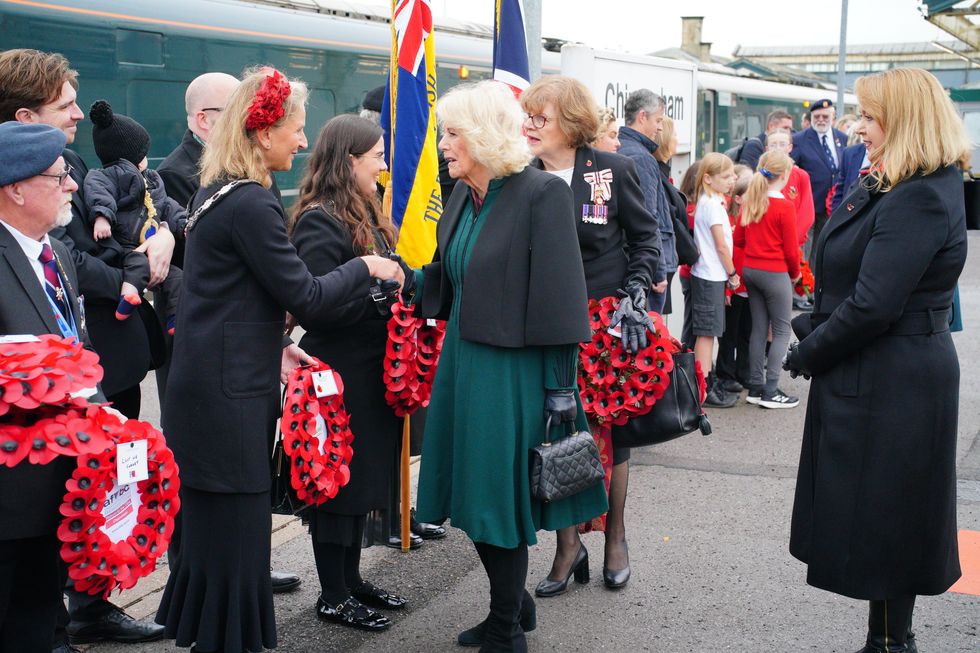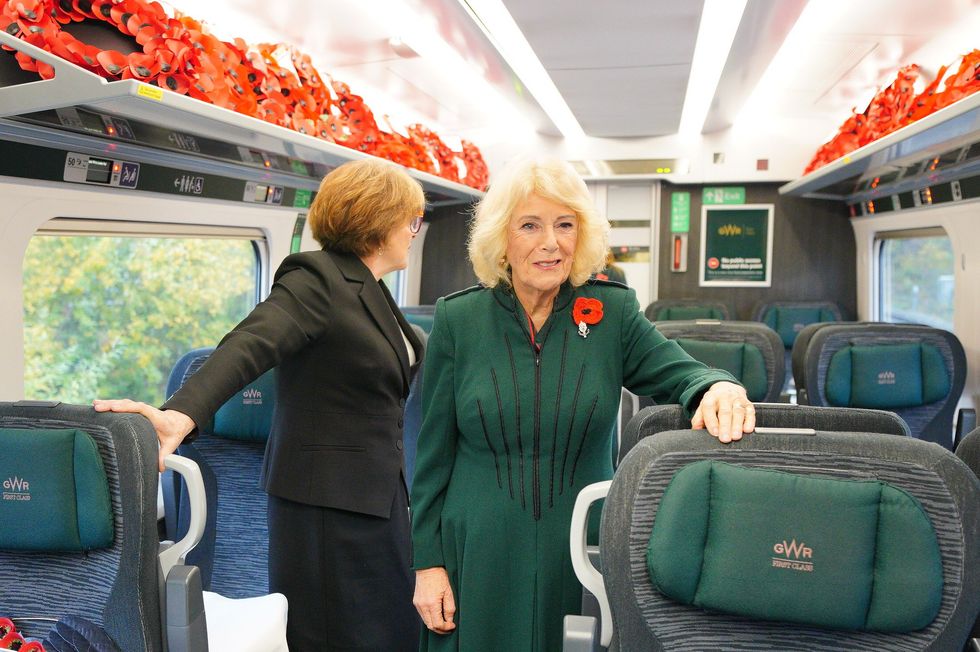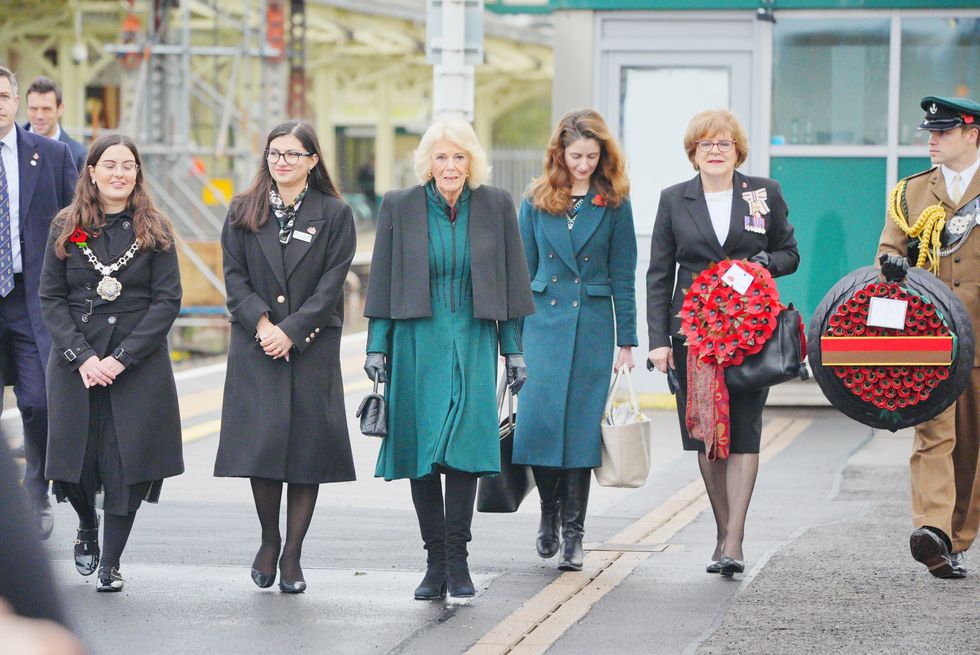Queen Camilla pictured at London Paddington station as she leads Armistice Day railway tribute

The Queen laid a wreath of poppies in memory of those who have served
Don't Miss
Most Read
Queen Camilla travelled from Chippenham to London Paddington today to take part in Great Western Railway’s Poppies to Paddington initiative, marking Armistice Day with a tribute to railway workers and all those who have lost their lives in conflict.
The Queen began her journey at Chippenham Train Station, where she met members of the local community carrying wreaths to be placed in the ceremony.
Her Majesty then boarded a train named Odette Hallowes GC MBE, in honour of the Second World War Special Operations Executive agent, for the journey to Paddington.
Upon arrival at Platform 1, the Queen attended the Act of Remembrance at the war memorial located on the platform. The commemoration opened with the Call to Remembrance before the Last Post was sounded.
TRENDING
Stories
Videos
Your Say
A two-minute silence was observed at 11am, followed by the Reveille. The Military Wives Choir performed the song Poppy Red during the ceremony.
The Queen laid a wreath of poppies in memory of those who have served and those who have died in past and present conflicts.
Following the formal tribute, Her Majesty met the Director of the Military Wives Choir, the Railway Chaplain, and a small group of reservists and veterans who currently work within the rail industry and have served in recent operational theatres.
The event highlighted the continued links between the railway community and the Armed Forces, both historically and in the present day.

Queen Camilla leads Armistice Day railway tribute at London Paddington station
|PA
Mark Hopwood, Managing Director of Great Western Railway, welcomed the Queen and introduced her to a specially liveried train on Platform 1.
The train features the names of all 2,545 men who worked for GWR and died during the First World War. The train is named in honour of two railway workers who served: Allan Leonard Lewis VC and Harold Day DSC.
The Roll of Honour displayed on the train details each man’s former role within the railway company, along with his regiment, rank, age, and the location where he is remembered or laid to rest.
The Queen also met two current members of GWR staff whose family members are among those commemorated on the train’s exterior.
LATEST DEVELOPMENTS ON ARMISTICE DAY

Queen Camilla pictured aboard the train from Chippenham in Wiltshire to London Paddington
|PA
This personal element of remembrance forms a central part of Poppies to Paddington, which began in November 2020 during the Covid-19 lockdown as a way for people across the network to mark remembrance safely.
Since then, the initiative has become a key annual moment in the Armistice calendar. More than 60 railway stations across the GWR route take part each year, placing wreaths on early-morning train services bound for Paddington. Last year, over 200 wreaths were laid at the memorial on Platform 1.
This year’s ceremony takes place on the 80th anniversary of the end of World War Two and acknowledges the role of the railway in conflict over the past two centuries.
The railway network has been closely tied to military history since its earliest years, from transporting troops and equipment during the Crimean War to its role in evacuation operations during World War Two, including Sir Nicholas Winton’s Kindertransport rescue efforts in 1939.

Queen Camilla at Chippenham train station in Wiltshire, as part of the Great Western Railway 'Poppies to Paddington' event
|PA
The visit also arrives shortly after the 200th anniversary of the modern railway. On September 27, the milestone of the first steam-hauled passenger journey on a public railway was commemorated.
The rail system has since connected communities, enabled national mobility and played a central part in social and economic life. It was also the setting for the first royal train journey when Queen Victoria travelled from Slough to London Paddington in 1842.
Today’s ceremony placed the railway’s legacy of service and sacrifice at the centre of national remembrance. Queen Camilla’s presence highlighted the continuing importance of honouring those who served and acknowledging the contributions of military families, reservists and veterans whose lives remain connected to the railway network.











